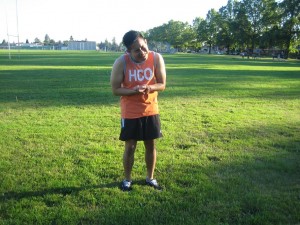The carpal tunnel is the pathway within the wrist and it is comprised of the curving carpal bones, which are the eight bones of the wrist and the ligament that connects the pillars of an arch.
[youtube url=”https://www.youtube.com/watch?v=J11EIfiHMYw” width=”220″]A carpal tunnel syndrome will happen once the median nerve will be compressed due to the inflammation of the nerve and tendons. The median nerve is responsible for the sensations to the side of the fingers like the thumb, index and middle fingers. It also gives power to the muscles in the forearm and hand and has the ability to grasp an object between the thumb and forefingers, known also as pincher grasp. When the nerves is pinched or impinged, there will be numbness, tingling, and sometimes will cause pain to the affected fingers and hand and will spread to the forearm. Any condition that puts pressure on the median nerve at the wrist will cause the syndrome, like excessive repetitive movement of the wrist and hands in continuous typing can activate the symptoms of the syndrome.

Symptoms
People usually with carpal tunnel syndrome primarily take note that the fingers simply fall asleep and end up unresponsive at night. The reason why they experience this kind of symptoms at night is the relaxed and flexed position of the hand and wrist while sleeping or the accumulation of fluid that puts pressure around the joint. They wake up in the morning with the presence of numbness and burning of the hands. Burning sensation and unresponsiveness can spread to the middle of the forearm, and sometimes can reach to the shoulders. Carpal tunnel syndrome can temporarily and resolves on its own or becomes worst over time.
Some common conditions that can cause carpal tunnel syndrome include hypothyroidism, obesity, pregnancy, arthritis and diabetes. A trauma can also trigger carpal tunnel syndrome. In pregnancy, the symptoms are usually resolved within a few months after delivery. Women are more susceptible to these conditions than in men
Occupations like assembly line workers, seamstresses, and hairstylist can have higher risk of acquiring this condition. Any activity that requires prolonged repetitive use of the arms, wrist, and hands has higher chances of developing the symptoms.
Ways of treating carpal tunnel syndrome
- Lifestyle changes. Adjusting the ways the person doing a repetitive motion. Changing the frequency of the motion being performed, and increase the amount of rest time between the movements.
- As a first aid measure, immobilize the wrist by putting a splint to minimize or for preventing pressure on the nerves. Splints should be comfortable and neutral position and supports the wrist, and worn during night time to minimize the sore numbness or tingling, and making the median nerve tolerate daytime activities.
- Give the patient anti-inflammatory drugs or injections of steroids to reduce swelling of the wrist.
Prevention of carpal tunnel syndrome
- Sleep with the wrist in a straight position and put splint on the wrist.
- Keeping the wrist straight when using a tools and try not using splints.
- Avoiding doing flexing and extending the wrist repeatedly.
- Do some stretching exercises every day.
- Use the correct positioning of hands and wrist while doing work.
- Observes ergonomic which involves the correct posture of the wrist and hand guidelines in helping prevent carpal tunnel syndrome from occurring.
